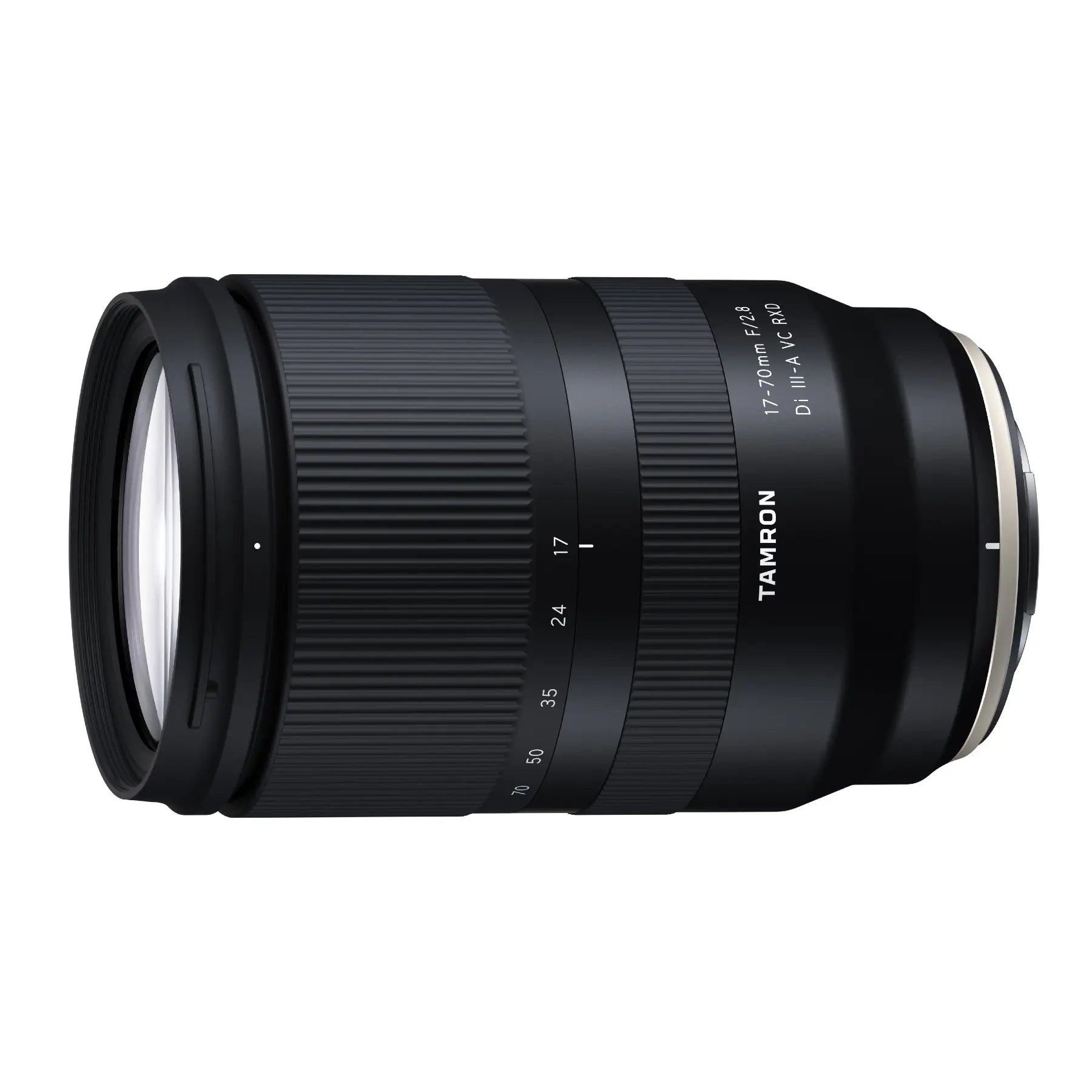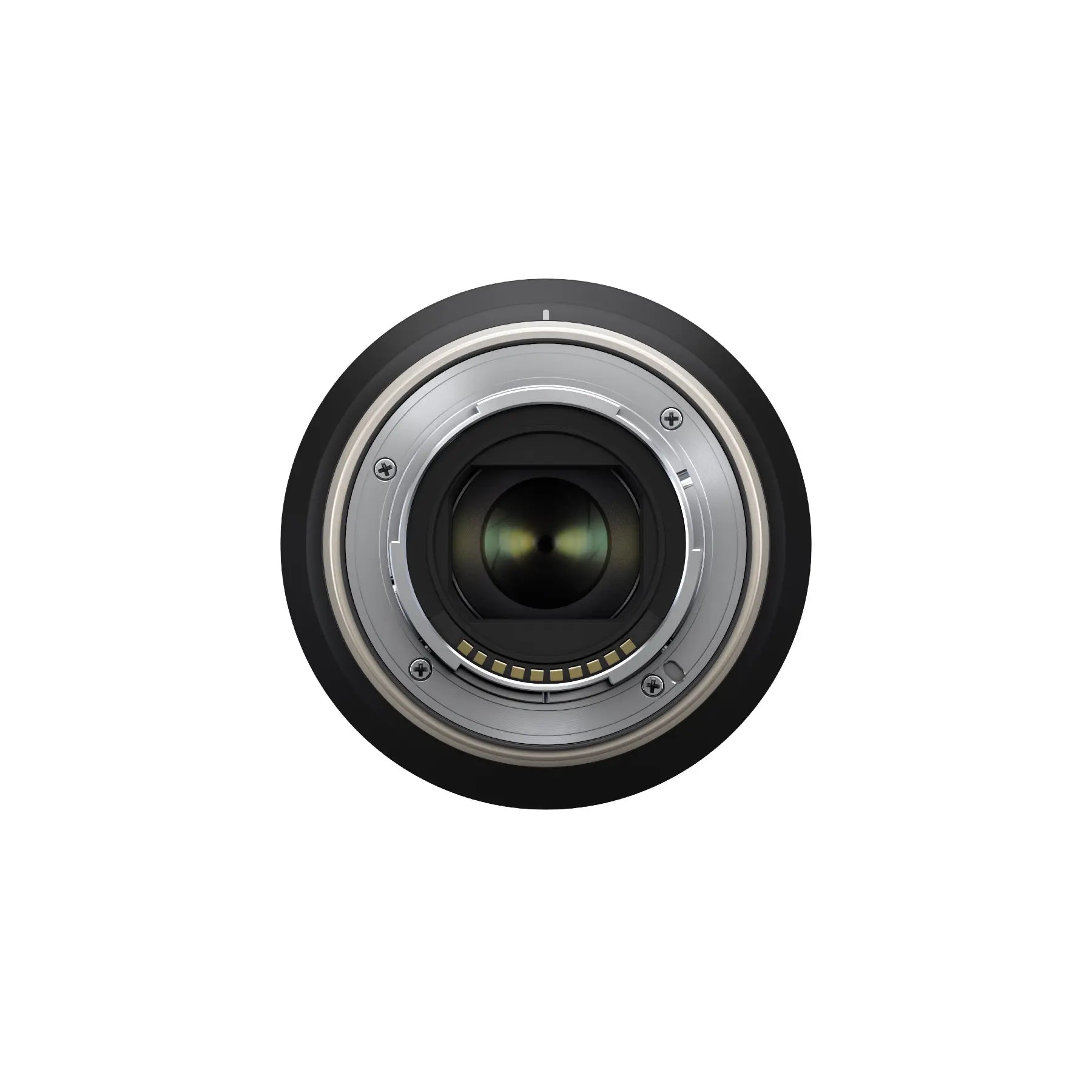Product Description
Tamron 17-70mm F2.8 Di III-A VC RXD Lens – Fuji X
Versatile Zoom with a Bright Constant Aperture
The Tamron 17-70mm f2.8 Di III-A VC RXD is a fast, all-purpose zoom lens designed for APS-C-format FUJIFILM X-mount mirrorless cameras, offering a 25.5-105mm equivalent focal length range. Ideal for everyday photography, this lens covers wide-angle to short-telephoto fields of view with a bright constant f2.8 maximum aperture, ensuring consistent brightness and enhanced depth of field control, even in low-light conditions.

Key Features
Advanced Optical Performance
- Bright f2.8 Constant Aperture – Delivers excellent low-light performance and allows for shallow depth of field effects.
- Two Moulded Glass Aspherical and One Hybrid Aspherical Element – Minimise distortion and spherical aberrations for improved sharpness and clarity.
- Two LD (Low Dispersion) Elements – Reduce chromatic aberrations and colour fringing, ensuring high image clarity and true-to-life colour accuracy.
- BBAR (Broad-Band Anti-Reflection) Coating – Suppresses flare and ghosting for high contrast and rich colour fidelity, even in strong lighting conditions.

Fast and Silent Autofocus
- RXD (Rapid eXtra-silent stepping Drive) Autofocus Motor – Provides quiet, smooth, and fast focusing, perfect for both photography and video applications.
- Minimum Focusing Distance of 7.5" – Enables close-up photography with a 1:4.8 maximum magnification.
- Full-Time Manual Focus Override – Allows for fine-tuned manual adjustments, even when autofocus is engaged.

Vibration Compensation (VC) for Sharp Handheld Shooting
- Tamron’s VC Image Stabilization System – Reduces camera shake, making it ideal for low-light photography and handheld shooting.
- Smooth Video Capture – Ensures stable, shake-free footage, improving the quality of handheld video recording.

Rugged Design for All-Weather Shooting
- Moisture-Resistant Construction – Allows for reliable performance even in inclement weather conditions.
- Fluorine-Coated Front Element – Protects against dust, dirt, fingerprints, and smudging.

Aperture and Bokeh Control
- Rounded Nine-Blade Diaphragm – Produces a beautifully soft bokeh, enhancing background separation and subject emphasis.
Specifications
- Focal Length: 17-70mm (25.5-105mm equivalent on APS-C)
- Maximum Aperture: f2.8
- Minimum Aperture: f22
- Lens Construction: 16 elements in 12 groups
- Coatings: BBAR (Broad-Band Anti-Reflection) Coating
- Autofocus System: RXD (Rapid eXtra-silent Drive) Stepping Motor
- Minimum Focusing Distance: 7.5" (19cm)
- Maximum Magnification: 1:4.8
- Image Stabilization: VC (Vibration Compensation)
- Filter Size: 67mm
- Diaphragm Blades: 9 (Rounded)
- Weather Sealing: Moisture-resistant construction
- Weight: Approx. 530g

Why Choose the Tamron 17-70mm F2.8 Di III-A VC RXD for Fuji X?
- All-in-One Zoom – Covers everything from landscapes to portraits and macro shots.
- Superior Low-Light Performance – Thanks to the constant f2.8 aperture.
- Optical Excellence – Advanced elements and coatings ensure sharp, colour-accurate images.
- Quiet and Fast Autofocus – Ideal for both photo and video applications.
- Weather-Sealed and Durable – Perfect for outdoor shooting in any condition.
The Tamron 17-70mm f2.8 Di III-A VC RXD is the perfect travel, portrait, and everyday lens for Fuji X photographers, offering outstanding image quality, fast autofocus, and advanced stabilization in a compact, weather-resistant design.
| Focal Length | 17-70 mm |
| Light intensity | F 2.8 |
| Minimum Object Distance |
0.19m (WIDE)
0.39m (TELE)
|
| Maximum Magnification Ratio |
1:4.8 (WIDE)
1:5.2 (TELE)
|
| Filter Size |
67 mm
|
| Weight |
530 g
|
| Groups-Elements |
12-16
|
| Angle of View |
79° 55' -23° 00'
|
| Diaphragm Blades |
9
|
| Aperture (min.) |
F 22
|
| Largest diameter |
74.6 mm
|
| Length |
119.3 mm
|
Payment & Security
Your payment information is processed securely. We do not store credit card details nor have access to your credit card information.


















